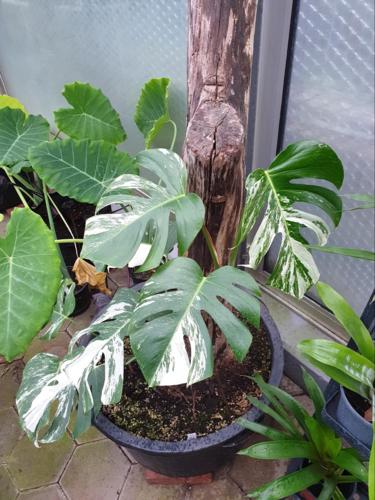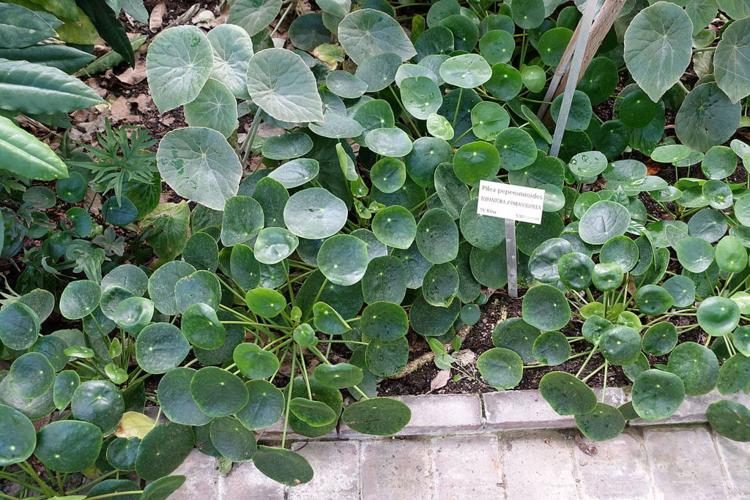January 27, 2021 by Fruchtpudding
Garden Trends: Houseplants
Ever since exotic houseplants became popular in the 17th century there have been, more or less, rapid trends in what the plants to have are for the aspiring plant collector. From the tulip mania in the Netherlands of the 1630s, over the (in retrospect extremely damaging) orchid collection hype of the Victorian nobility in the early 19th century, to the “revival” of the indoor plant after WW2 where tough aroids became the most desired indoor plants, these trends in what plants are popular have come and gone for hundreds of years, and today is no different.
Indoor plants are booming right now, the current demand for indoor greenery, especially since the last year, probably due to people spending more time at home, is unprecedented.
Even though we live in the modern world, where industrial scale production of plants at a vast scale is ubiquitous, suppliers can barely keep up, which has led to ever increasing prices for some of the more desired indoor plants. Before I get into what those desired plants are, I should clarify why speaking of a trend is misleading. There are vastly different scales to “trends”.
The vast majority of people that buy plants for their home, I’d wager over 99%, will do so by going to their nearest megastore that stocks plants, home improvement store, or garden center, looking at the plants there and then making a more or less informed buying decision. All plants there are mass produced by big companies, that are slow to adapt trends for various reasons. Introducing new plants into their range at this scale can take a decade!
Because of this slow pace though it’s somewhat stable and predictable where the road is going in regards to indoor plants, and if you recall the number from above, this is really what will affect the vast majority of people. For the last 5 to 10 years or so the trend has been going steadily away from indoor flowers and more towards foliage. Another notable change is the size of plants, it has steadily been going up, not only in the end size of the plants that are popular but also the sale size. Big leaves are also seemingly a must have. Of course, as with all industrial scale plant production, the plants that are chosen for this are undemanding, low light and humidity tolerant and easy to propagate (for the producer).
Summarizing this trend, I’d say it like this: Plants are going from home décor accessories, to home décor. Instead of small splashes of green (which are still and will always be popular) the new trend is using big, often singular, plants to make a statement. The plants for this are already bought at the intended size for the purpose they are supposed to serve. Examples are Monstera, Philodendron, Ficus lyrata, Alocasia, bananas and various palms such as Rhapis. They are big and bold statements and, as I’ve seen it described in other articles, are an attempt to bring nature into the often very urbanized, small apartments of millennials. If this plant selection seems strangely familiar you may be thinking of typical houseplants of the 70s and 80s. Big leaved, big growing, green plants were used everywhere, in homes and public spaces, and especially in offices.
The production of these plants is just ramping up, and definitely not keeping up with demand, even though they have been popular for at least 6 years now. This goes to show how long it takes for big producers to adapt to changing customer desires.
In contrast to this slow trend, where consumers do not really have much direct influence, there is what I’d call “microtrends” in various plant enthusiast communities. Here I am talking about people that see growing plants as their hobby and usually engage with other plant growers with similar interests. They may buy at grocery stores and garden centers but also have more specific interests that aren’t fulfilled by these sources. Different communities exist here, and looking closer at these and all of their trends is almost impossible. I am mentioning them because they are usually the gateway for new plants introduced into mass production, many years down the line. Because these communities are smaller and because many exist, trends here are quite rapid, with single plants or sometimes small groups of plants rising to popularity in the span of a few years. Sometimes this popularity then leaks outside to a broader audience (I guess you could use the horrible term “plantfluencer” here) which skyrockets the demand and can lead to ridiculous price spikes. Some of those plants then enter mass production eventually, a good example of this being the “UFO plant” Pilea peperomioides, which has gone through exactly this cycle over the last 5 years.
So, after all of this, can I answer the question “What plants are going to be popular in the future?”. Well, I don’t want to get too specific because it will obviously be outdated soon, but if you really want to be ahead of the curve, apply the thinking a mass producer of plants would have and look into these microtrends to make a pretty well educated guess about what is going to be popular in a few years.


